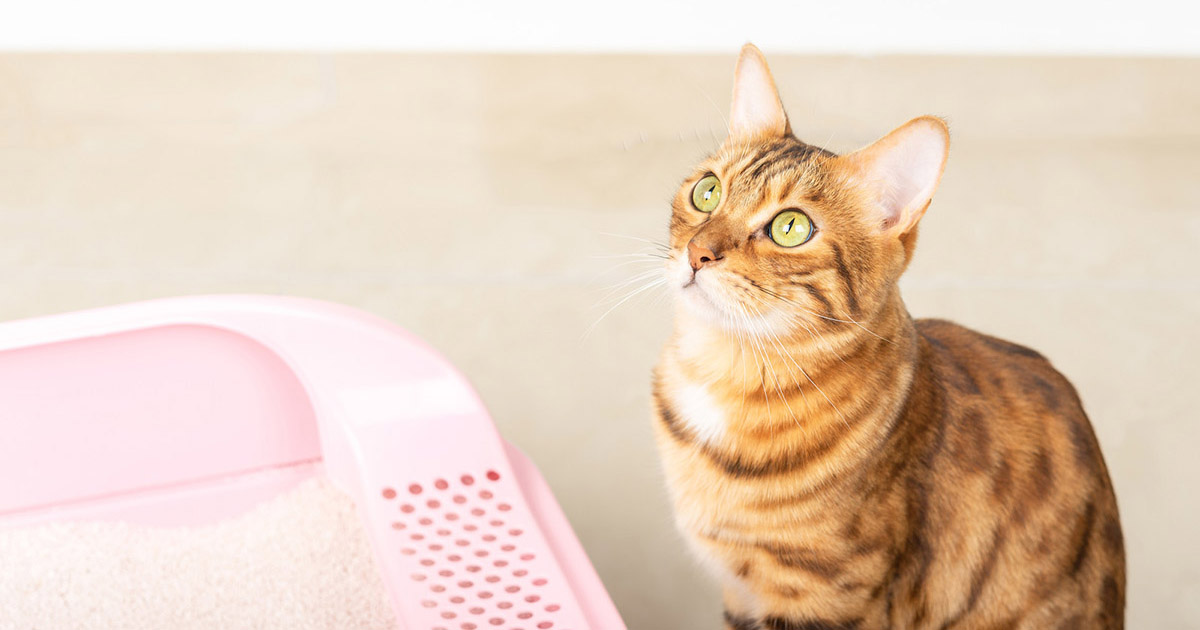Dangers of Flushing Cat Poop in Your Toilet - Precautionary Steps
Dangers of Flushing Cat Poop in Your Toilet - Precautionary Steps
Blog Article
The content down below relating to How to Dispose of Cat Poop and Litter Without Plastic Bags is really entertaining. Check it out yourself and figure out what you think of it.

Intro
As pet cat proprietors, it's necessary to bear in mind just how we throw away our feline pals' waste. While it may appear convenient to purge cat poop down the commode, this practice can have destructive repercussions for both the environment and human wellness.
Alternatives to Flushing
The good news is, there are much safer and more liable ways to take care of pet cat poop. Think about the adhering to options:
1. Scoop and Dispose in Trash
One of the most typical approach of throwing away cat poop is to scoop it into an eco-friendly bag and toss it in the trash. Make sure to utilize a committed litter inside story and dispose of the waste immediately.
2. Usage Biodegradable Litter
Choose eco-friendly cat trash made from products such as corn or wheat. These litters are environmentally friendly and can be safely thrown away in the garbage.
3. Bury in the Yard
If you have a lawn, take into consideration burying feline waste in a marked location away from vegetable yards and water resources. Make sure to dig deep adequate to stop contamination of groundwater.
4. Install a Pet Waste Disposal System
Purchase a pet dog garbage disposal system specifically created for pet cat waste. These systems make use of enzymes to break down the waste, reducing odor and ecological impact.
Health Risks
In addition to ecological problems, purging cat waste can also position health and wellness threats to human beings. Pet cat feces may consist of Toxoplasma gondii, a bloodsucker that can create toxoplasmosis-- a possibly extreme illness, particularly for pregnant ladies and individuals with weakened immune systems.
Environmental Impact
Flushing feline poop presents unsafe pathogens and parasites right into the water supply, posing a significant risk to aquatic communities. These contaminants can negatively impact marine life and compromise water quality.
Conclusion
Responsible pet ownership extends past giving food and sanctuary-- it additionally includes appropriate waste monitoring. By avoiding flushing feline poop down the toilet and opting for alternative disposal approaches, we can decrease our ecological footprint and safeguard human health.
Why Can’t I Flush Cat Poop?
It Spreads a Parasite
Cats are frequently infected with a parasite called toxoplasma gondii. The parasite causes an infection called toxoplasmosis. It is usually harmless to cats. The parasite only uses cat poop as a host for its eggs. Otherwise, the cat’s immune system usually keeps the infection at low enough levels to maintain its own health. But it does not stop the develop of eggs. These eggs are tiny and surprisingly tough. They may survive for a year before they begin to grow. But that’s the problem.
Our wastewater system is not designed to deal with toxoplasmosis eggs. Instead, most eggs will flush from your toilet into sewers and wastewater management plants. After the sewage is treated for many other harmful things in it, it is typically released into local rivers, lakes, or oceans. Here, the toxoplasmosis eggs can find new hosts, including starfish, crabs, otters, and many other wildlife. For many, this is a significant risk to their health. Toxoplasmosis can also end up infecting water sources that are important for agriculture, which means our deer, pigs, and sheep can get infected too.
Is There Risk to Humans?
There can be a risk to human life from flushing cat poop down the toilet. If you do so, the parasites from your cat’s poop can end up in shellfish, game animals, or livestock. If this meat is then served raw or undercooked, the people who eat it can get sick.
In fact, according to the CDC, 40 million people in the United States are infected with toxoplasma gondii. They get it from exposure to infected seafood, or from some kind of cat poop contamination, like drinking from a stream that is contaminated or touching anything that has come into contact with cat poop. That includes just cleaning a cat litter box.
Most people who get infected with these parasites will not develop any symptoms. However, for pregnant women or for those with compromised immune systems, the parasite can cause severe health problems.
How to Handle Cat Poop
The best way to handle cat poop is actually to clean the box more often. The eggs that the parasite sheds will not become active until one to five days after the cat poops. That means that if you clean daily, you’re much less likely to come into direct contact with infectious eggs.
That said, always dispose of cat poop in the garbage and not down the toilet. Wash your hands before and after you clean the litter box, and bring the bag of poop right outside to your garbage bins.
https://trenchlesssolutionsusa.com/why-cant-i-flush-cat-poop/

We had been made aware of that editorial on Can You Flush Cat Poo or Litter Down the Toilet? through an acquaintance on a different blog. Do you know about anybody else who is interested by the niche? Take a moment to share it. I value reading our article about Can You Flush Cat Poop Down The Toilet?.
Customer Reviews Report this page